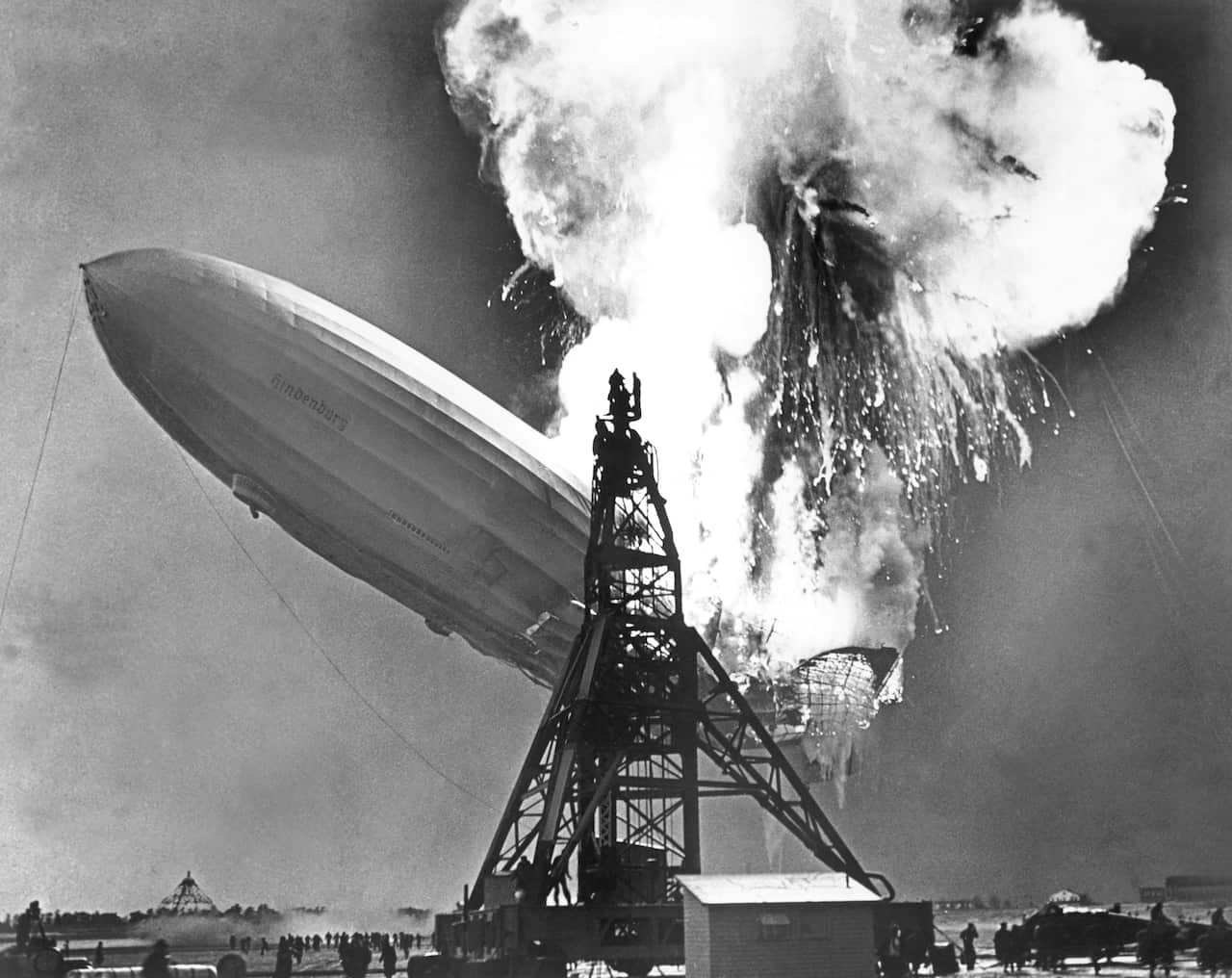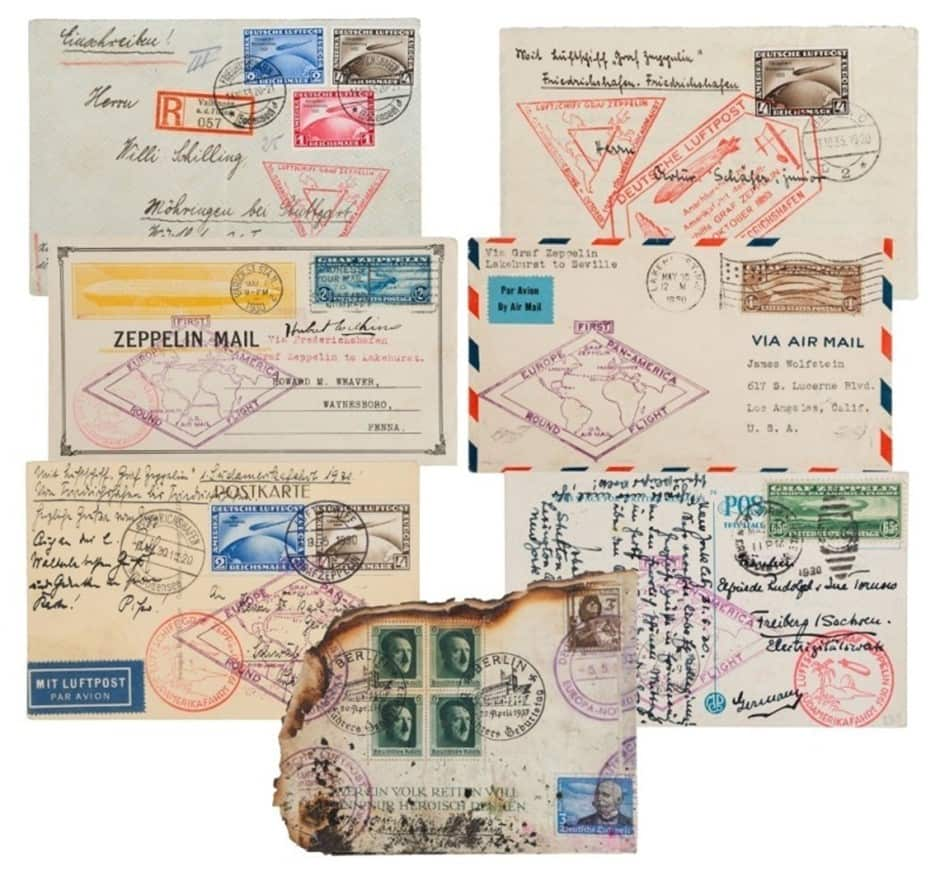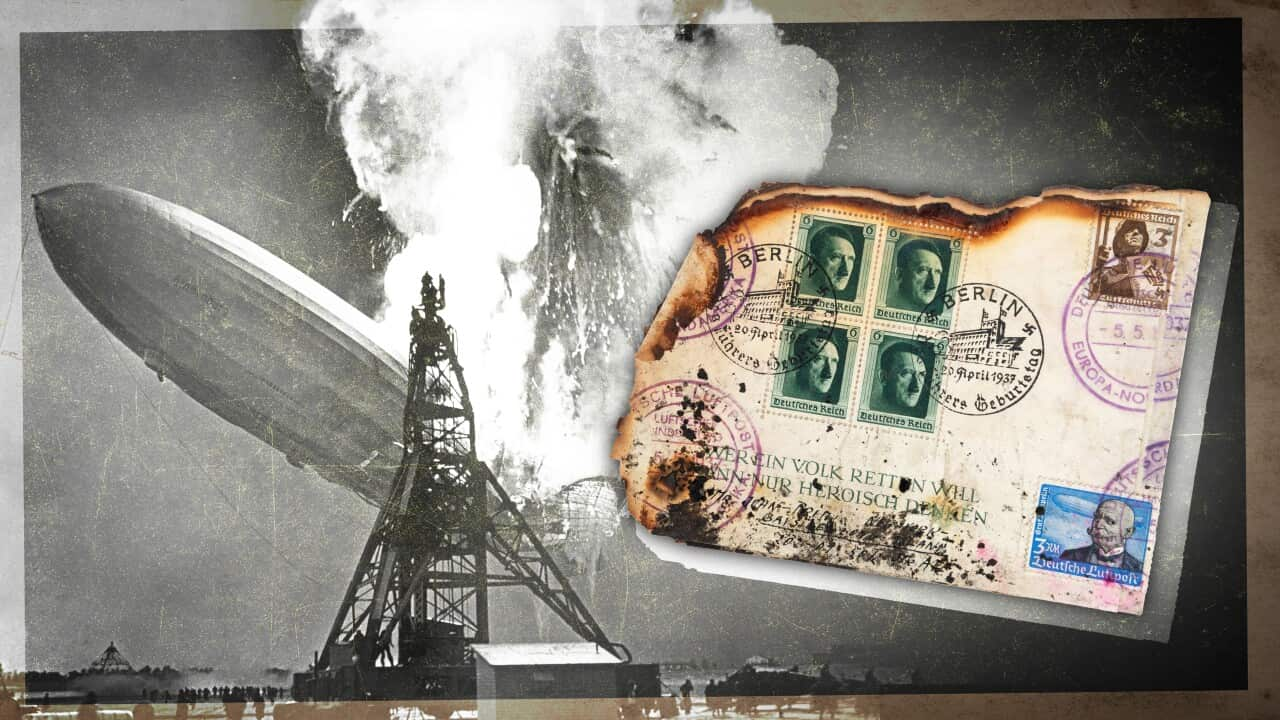Key Points
- A collection of mail items sent via airship is up for auction in Australia.
- The most valuable of the items is a burnt envelope that was on board the Hindenburg airship when disaster struck.
- The lot, made up of more than 100 items, is expected to fetch tens of thousands of dollars.
The auctioneer responsible for the sale expects the bundle of more than 100 items to sell for more than $30,000 with the piece from the Hindenburg disaster alone worth about $20,000.
Airship transport
Airships were considered a luxurious way to cross the Atlantic in the 1920s and 1930s.

The Hindenburg airship transported passengers between Germany and the US. Source: Getty / Fox Photos/
The LZ 129 Hindenburg, built by the Zeppelin company, was 245 metres long — or about three times the length of a Boeing 747 plane — and 15 storeys tall.
“There was a grand piano, there was a smoking room or library, it was really a very elegant way to spend two or three nights floating across the Atlantic.”
The Hindenburg was carrying 17,600 pieces of mail on the day it crashed.
The Hindenburg explosion
While powered by diesel, helium had been used to provide buoyancy in the air, however a shortage of the gas meant highly flammable hydrogen gas was often used instead.

The Hindenburg airship exploded upon its arrival to New Jersey, after its trip from Germany on 6 May 1937. Source: Getty / New York Daily News Archive/NY Daily News
News crews onsite to capture the arrival of the airship instead saw it catch fire and explode in the air.
While the exact cause of the incident has never been conclusively identified and some claimed the aircraft had been sabotaged, it’s most likely leaking hydrogen was ignited by static electricity.
A time stamp of 1937
A stamp on the envelope shows it was posted from Berlin on 20 April 1937 and it was postmarked again while on the Hindenburg in May.

The burnt envelope with other items in the same lot it is being auctioned off with. Source: Supplied / Leski Auctions
The envelope fragment features stamps, including four of .
Another of the stamps shows Germany’s former president, Field Marshal Paul von Hindenburg, who the airship was named after. Behind him is the image of an airship.
Significance of burnt envelope
“In the years since 1937, 150 odd have been tracked, so it’s possible that people getting a charred piece of mail from the Hindenburg just threw it away, or that it’s just been lost or misplaced,” he said.
Leski said the piece was currently owned by an overseas collector whose son is based in Australia.
